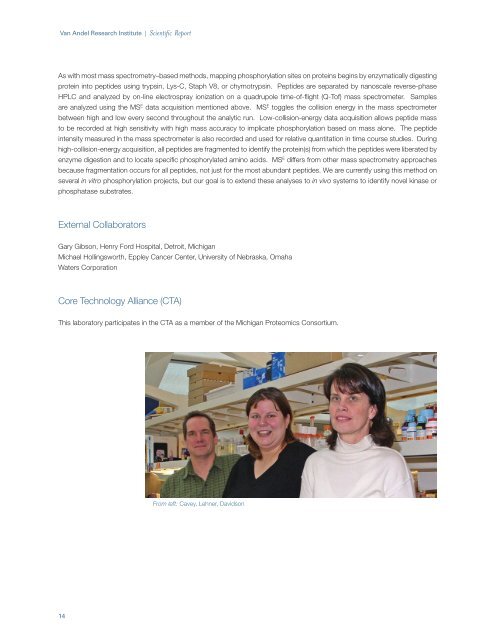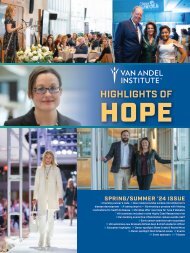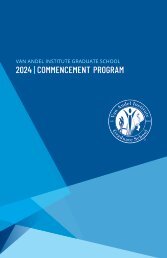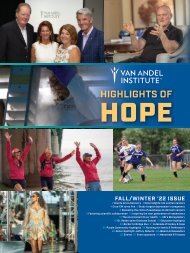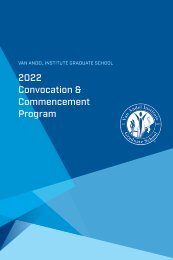2008 Scientific Report
Create successful ePaper yourself
Turn your PDF publications into a flip-book with our unique Google optimized e-Paper software.
Van Andel Research Institute | <strong>Scientific</strong> <strong>Report</strong><br />
As with most mass spectrometry–based methods, mapping phosphorylation sites on proteins begins by enzymatically digesting<br />
protein into peptides using trypsin, Lys-C, Staph V8, or chymotrypsin. Peptides are separated by nanoscale reverse-phase<br />
HPLC and analyzed by on-line electrospray ionization on a quadrupole time-of-flight (Q-Tof) mass spectrometer. Samples<br />
are analyzed using the MS E data acquisition mentioned above. MS E toggles the collision energy in the mass spectrometer<br />
between high and low every second throughout the analytic run. Low-collision-energy data acquisition allows peptide mass<br />
to be recorded at high sensitivity with high mass accuracy to implicate phosphorylation based on mass alone. The peptide<br />
intensity measured in the mass spectrometer is also recorded and used for relative quantitation in time course studies. During<br />
high-collision-energy acquisition, all peptides are fragmented to identify the protein(s) from which the peptides were liberated by<br />
enzyme digestion and to locate specific phosphorylated amino acids. MS E differs from other mass spectrometry approaches<br />
because fragmentation occurs for all peptides, not just for the most abundant peptides. We are currently using this method on<br />
several in vitro phosphorylation projects, but our goal is to extend these analyses to in vivo systems to identify novel kinase or<br />
phosphatase substrates.<br />
External Collaborators<br />
Gary Gibson, Henry Ford Hospital, Detroit, Michigan<br />
Michael Hollingsworth, Eppley Cancer Center, University of Nebraska, Omaha<br />
Waters Corporation<br />
Core Technology Alliance (CTA)<br />
This laboratory participates in the CTA as a member of the Michigan Proteomics Consortium.<br />
From left: Cavey, Lehner, Davidson<br />
14


